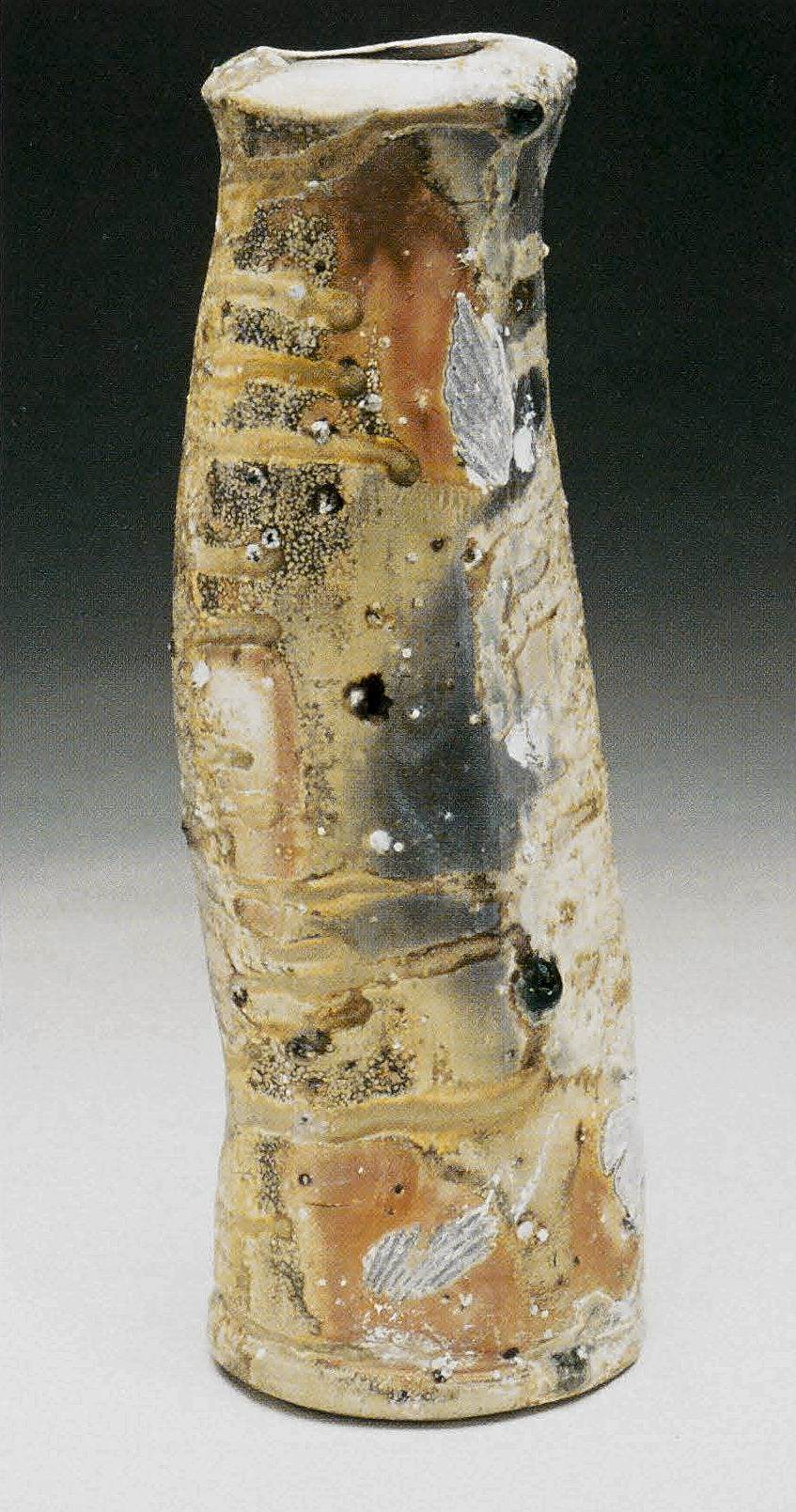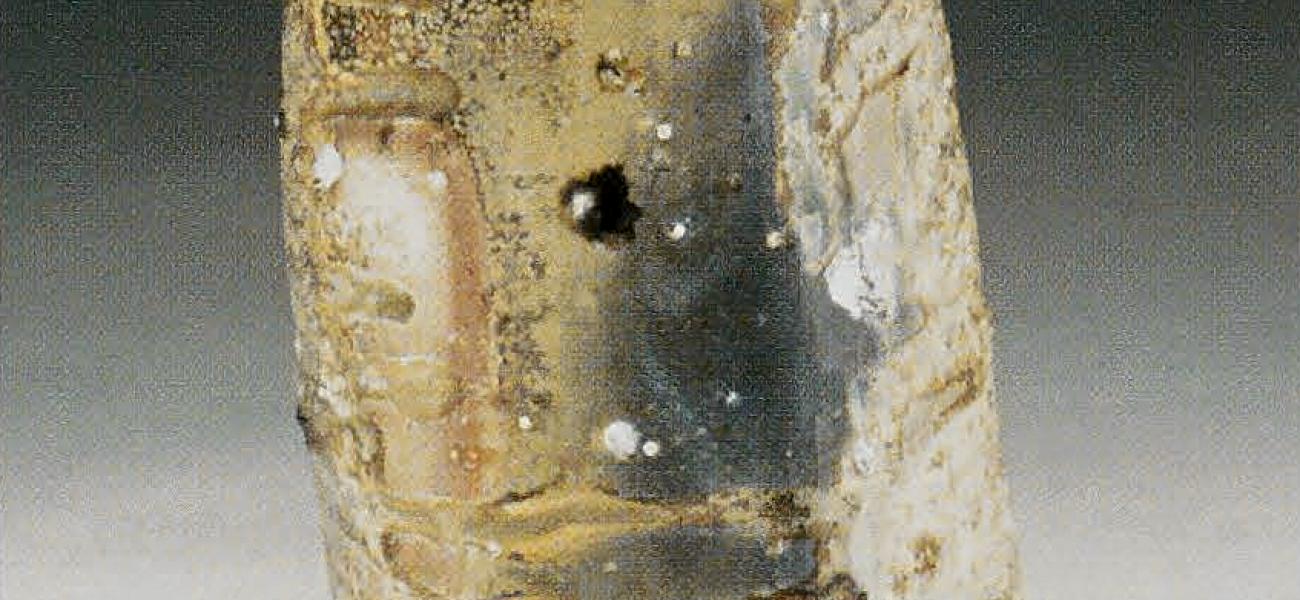Delivering Color

The colors of natural-ash glazed ceramics can be inseparable from both visual and tactile textures,' and may need to be touched to be fully experienced. For example, a certain fluid emerald-green appears ephemeral when viewed from different angles, the color-source seeming to disappear or hang suspended in its transparent medium.
Sometimes, dark gray or black matte surfaces reflect light from tiny diamond-like crystals', revealed only when the angle of observation and intensity of illumination change. Some pieces document the kinetic passage of fluid ash glaze from opaque to transparent as heavier microparticles streak, smear, or settle out over many hours during the "heat-work" phase of a firing.
If that reads as if it had been written by someone in a white lab coat, try to imagine "Magic Science" embroidered on the pocket, above chain-oil stains that came from running a Stihl MS 361 saw.

